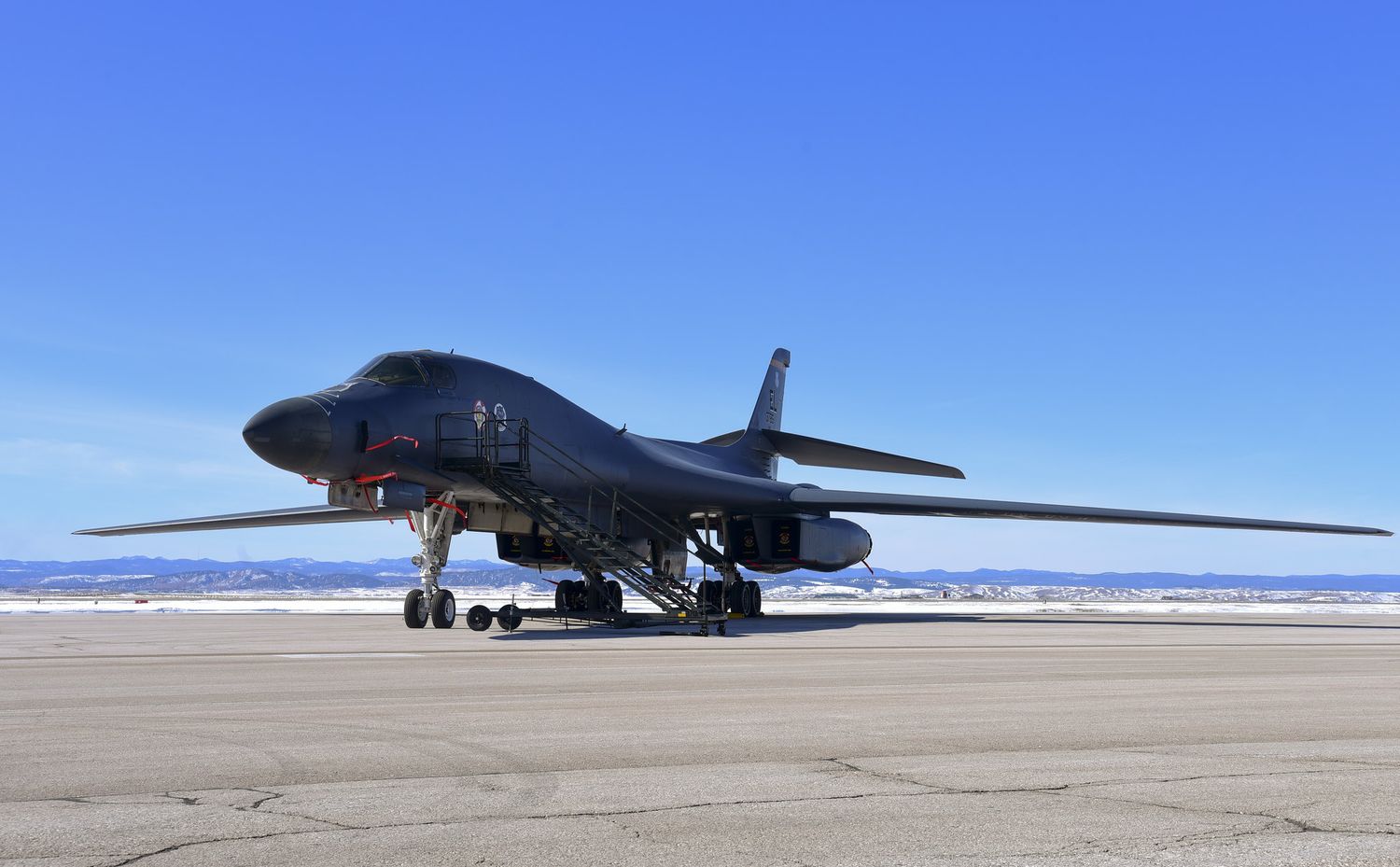B-1B «Lancer» strategic bomber crashes: What we know
A U.S. Air Force Rockwell B-1B «Lancer» strategic bomber crashed on January 4, 20224, at 5:50 pm (local time) while attempting to land at Ellsworth Air Force Base. All four crew members were able to successfully eject.
The stricken B-1B «Lancer» belonged to the USAF’s 28th Bomb Wing and was returning from a training mission when it crashed while attempting to land at Ellsworth Air Force Base, South Dakota.
????#BREAKING: A B1 bomber has crashed outside of Ellsworth Air Force Base ⁰⁰????#BoxElder | #SouthDakota
⁰Currently, there is a large emergency response underway after a B1 Bomber crashed outside the Ellsworth Air Force Base in Box Elder, South Dakota. Ellsworth Air Force Base… pic.twitter.com/2KQfc8zjUO— R A W S A L E R T S (@rawsalerts) January 5, 2024
Traffic cameras located in the vicinity of the air base captured a large flash, possibly due to the loss of containment and subsequent ignition of fuel aboard the aircraft, leading to the presumption that the B-1B suffered catastrophic damage. Fire trucks were dispatched to the scene, where several witnesses reported hearing numerous explosions.
Fortunately, according to the press release issued by Ellsworth AFB, all four crew members ejected in time and escaped the most serious consequences of the accident.
The incident has been confined to the base and investigators are currently on the scene. Further details will be provided as they become available.
B-1B Lancer supersonic bomber
The multi-mission B-1 is the backbone of America’s long-range bomber force. It can rapidly deliver massive quantities of precision and non-precision weapons against any adversary, anywhere in the world, at any time.
The B-1B’s blended wing/body configuration, variable-geometry wings and turbofan afterburning engines, combine to provide long range, maneuverability and high speed while enhancing survivability.
The B-1 is a highly versatile, multi-mission weapon system. The B-1B’s synthetic aperture radar is capable of tracking, targeting and engaging moving vehicles as well as self-targeting and terrain-following modes. In addition, an extremely accurate Global Positioning System-aided Inertial Navigation System enables aircrews to navigate without the aid of ground-based navigation aids as well as engage targets with a high level of precision.
The B-1B was first used in combat in support of operations against Iraq during Operation Desert Fox in December 1998. In 1999, six B-1s were used in Operation Allied Force, delivering more than 20 percent of the total ordnance while flying less than 2 percent of the combat sorties.
During the first six months of Operation Enduring Freedom, eight B-1s dropped nearly 40 percent of the total tonnage delivered by coalition air forces. This included nearly 3,900 JDAMs, or 67 percent of the total. In Operation Iraqi Freedom, the aircraft flew less than 1 percent of the combat missions while delivering 43 percent of the JDAMs used. The B-1 continues to be deployed today, flying missions daily in support of continuing operations.
The first production B-1 flew in October 1984, and the first B-1B was delivered to Dyess Air Force Base, Texas, in June 1985. Initial operational capability was achieved on Oct. 1, 1986. The final B-1B was delivered May 2, 1988. USAF has 45 B-1B Lancers on active duty
-UPDATE-
First images of the crashed B-1B.
Damn. Here’s the B-1. @TheIntelFrog @thenewarea51 pic.twitter.com/pyiJPwK3tI
— ????????_???????????????????????????????????????????????? ( ???????? ) (@SR_Planespotter) January 5, 2024



Para comentar, debés estar registradoPor favor, iniciá sesión